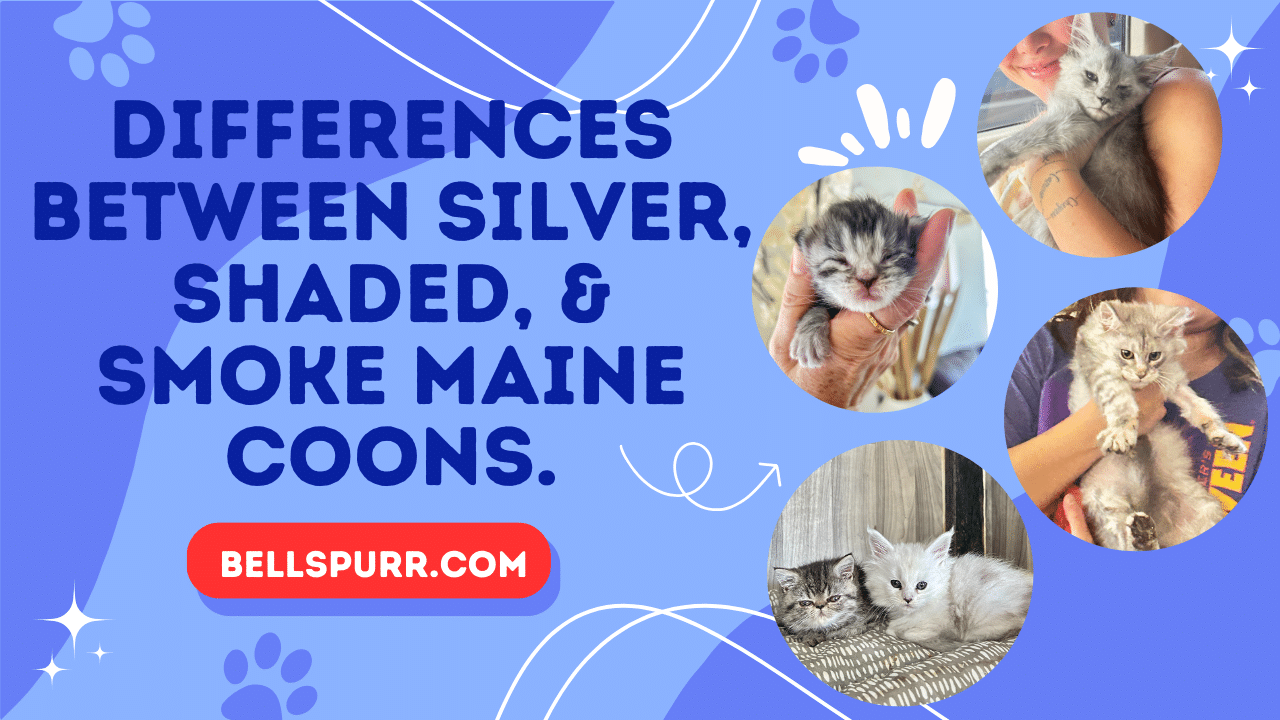Maine Coons, these beautiful long-haired, gentle giants, impress with their stunning looks and unique features. They can be even more stunning if they have the silver gene or wide band gene.
Raising Cats, Especially Shaded Silver Tabbies, Is Pretty Cool And Has Its Quirks. Telling apart silver, smoke, shaded, and shell patterns relies on genetics and precise breeding.
Let’s Dive Into How These Coat Patterns Come About And How To Spot And Deal With These Beautiful Variations.
Exploring The World Of Silver Tabbies Is A Fun Journey, And Here’s How To Tell The Difference Between These Three Unique Patterns. Let’s break down smoke, shaded, and shell patterns. Before we dive in, let’s explain what these patterns mean for silver tabby cats.
The unique fur patterns come from the “Silver Gene,” this single gene, changes the color of a cat’s fur in various ways. Removes the brown of tabby cat and replaces it with a silver color.
Why are these, rare Maine Coon colors?
People recognize Maine Coons for their large size, gentle nature, and luxurious coat. Many know the common brown tabby MC, or black Maine Coon, but this breed also has surprising rare colors. In this article, we will look at three unique Maine Coon color variations: Silver, Shaded, and Smoke.
Silver Maine Coons have a beautiful silver-tipped coat. This coat gives them a special, almost magical look.
A gene mutation creates this color variation by causing the fur to lack pigment towards the tips. This results in white or silver hairs that give off a shimmering effect. Silver Maine Coons can come in various shades such as blue, red.
The Silver Inhibitor Gene
Black Silver Maine Coons
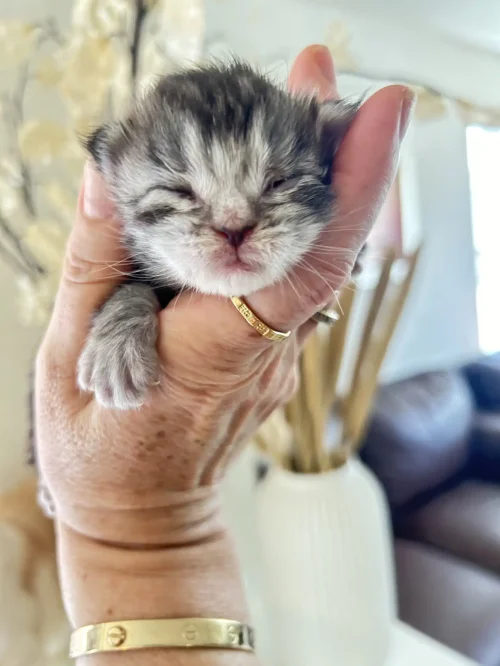
Black silver tabby Maine Coons have a black base coat with silver stripes and patterns throughout their fur. Black ticked tabby are great to work with becasue they don’t have the common swirls of a mackarel tabby. – Black Silver Mackerel Tabby Maine Coon Kittens, can also become silver Tabby as any form of tabby.
The beautiful colors of Silver Maine Coons come from a special gene change. People call this change the Silver Inhibitor Gene. This gene affects the production of melanin, the pigment responsible for giving fur its color. This gene stops the production of melanin at the tips of hair, which causes the ends to turn silver or white.
While this gene can occur naturally in any breed, it is particularly prevalent in Maine Coons. This mutation probably began in these cats. Early North American settlers bred them to preserve their unique traits and appearance.
High Silver Maine Coons
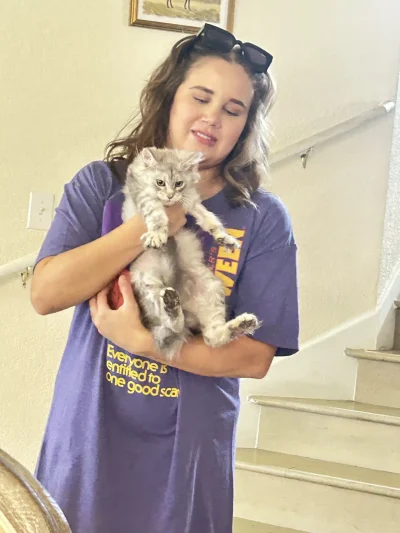
Is a Silver Maine Coon with a lot of Silver in it’s coat, but still has tabby markings on the face. To create a Shaded Maine Coon, you need to remove all tabby markings from the face.
The face should be white. The eyes can be gold or green. They should have black eyeliner around them. Even though the face is white it has also a black nose or black lined nose different from a White Maine Coon cat.
Black Silver Tabby Maine Coon
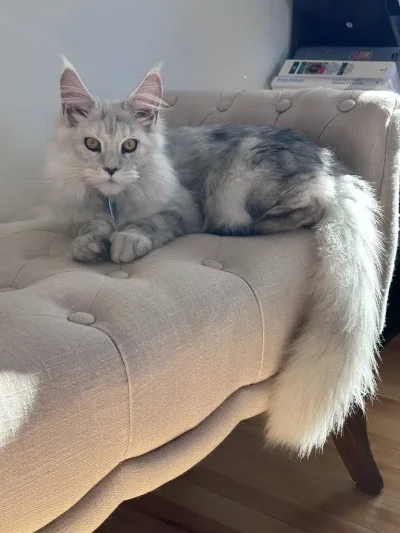
Spotlight on the Black Silver Tabby Maine Coon
The Black Silver Tabby Maine Coon is one of the most stunning variations of this breed. These cats feature a dark black base coat with shimmering silver stripes and markings. Unlike shaded or smoke Maine Coons, black silver tabbies clearly show the classic tabby pattern, especially around the face, legs, and tail.
You’ll notice:
Dark black tabby lines on a silvery-white background
Mackerel, classic (blotched), or ticked tabby patterns depending on genetics
A shimmering coat effect caused by the inhibitor gene, which reduces pigment at the hair tips
This coat pattern not only makes them photogenic but also highly sought after among Maine Coon lovers. They stand out for their contrast and elegance.
Black Silver Shaded Maine Coons
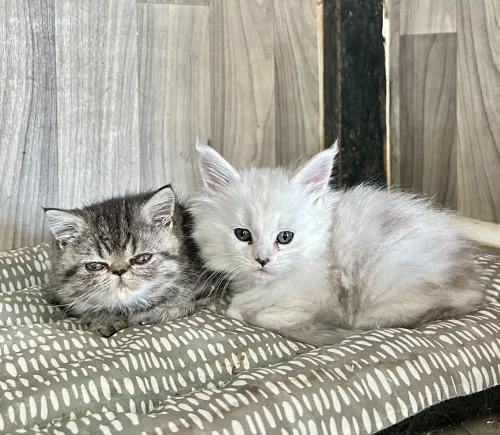
Black silver shaded maine coon tabbies are lighter that the silver tabbies mentioned before. One of the goals of this shade is to eliminate any tabby markings on a tabby cat. Shaded Tabbies Have Their Fur Tips Colored Up To A Quarter Of The Hair Length, Giving A Darker Tone Than The Shell Pattern.
Blue Tabby Maine Coons have also a dilute gene, that modifies a black Maine Coon into a gray Maine Coon which we call blue.
Crazy huh? But real luxury Coon breeders, like us, are rare. We use common genetic traits to create these exclusive colors. These colors are more expensive because they are like owning a Lamborgini versus a Lexus.
Here, Each Hair’s Tip Is Colored Only Up To An Eighth Of Its Total Length. People also call these Shell Maine Coons Chinchilla Maine Coons.
Black Smoke Maine Coons
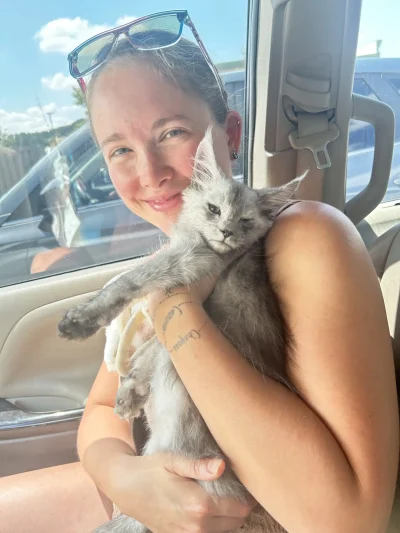
Black Smoke Maine Coons, have a silver base coat with silver tips. The smoke cat is not a tabby, it comes from a solid black Maine Coon, or a solid Blue Maine Coon, Or a Solod Red Maine Coon, Or a Solid Cream Maine Coon.
The Smoke Pattern Takes It Further, With The Hair Tips Colored Up To Half Of The Hair Length, Resulting In A Mostly Black Or Gray Look.
Our black smokes are exceptionally light. We achieve this by using the extreme inhibitor gene. We breed the lightest cat with the lightest cat. This process gives us a light smoke that is “la creme de la creme.”
Blue Smoke Maine Coons have a silver base coat with blue/gray tips. Researchers call the gene responsible for this unique color the Silver Inhibitor Gene, also known as the I gene. Both parents must inherit this recessive gene to produce a Smoke Maine Coon kitten.
One of the parents has to look smoke or silver to produce a smoke or silver kitten. If neither of the parents look smoke or silver the kittens will not be either. Impossible.
Shaded Maine Coons are another stunning color variation that is often mistaken for a regular tabby pattern. However, if you look closely, you will see that their coats have a lovely gradient effect. The fur is darker near the tips and lighter at the root. The inhibitor gene is so strong here that the cat looks almost white with few shadow markings on the body.
Going Deeper Into Tarnishing And The “Wide Band” Effect
Knowing About Extra Details Like Tarnishing And The “Wide Band” Effect Is Key To Telling These Coat Patterns Apart. Tarnishing Refers To A Reddish Hue That Sometimes Appears In Silver Tabbies, Often On The Muzzles. This Effect Is More Common In Random-Bred Silver Tabbies Because Of Gene Expression Variations.
The “Wide Band” Effect Determines How Wide The Lighter Band Between The Tip And Base Of The Hair Is. Breeders often discuss wide band as if it is one gene. However, it is becoming clearer that many genes may affect the band’s width. This Width Is A Crucial Feature That Helps Breeders And Fans Identify And Classify Smoke, Shaded, And Shell Cats.
Playing With Genetics:
To Truly Understand These Coat Patterns, We Need To Consider The Genetic Mixes That Lead To Each Look. A Broader View Of How The Inhibitor Gene Interacts With Other Genetic Elements Is Essential.
Non-Agouti + Wide Band: This Combo Gives A Solid Color, Non-Patterned Coat.
Non-Agouti + Wide Band + Inhibitor Gene: Add The Inhibitor Gene, And You’ll Get The Smoke Pattern.
Agouti + Wide Band: This Leads To Golden Or Red Series Of Tabby coat Patterns. Do not confuse them with Black Amber Tabby Maine Coons.
Agouti, Wide Band, and Inhibitor Gene: When the Inhibitor Gene is present, the coat will have silver tabby patterns.
Getting Into The Inhibitor Gene
The Inhibitor, or Melanin Inhibitor, gene plays a key role in color expression in silver tabby cats. Melanin is the pigment that gives a cat its color. The inhibitor gene mainly blocks the yellow phaeomelanin pigment. It also affects the black eumelanin pigment.
For Those Diving Into Cat Genetics, Keep In Mind That The Inhibitor Gene Is Dominant. If A Cat Doesn’t Show A Silver Pattern, It Doesn’t Have This Gene.
This gene shows incomplete dominance. Having one copy partially blocks pigment expression. However, having two copies fully blocks coat color.
Breeding And Shows: For Breeders, Grasping These Patterns Is Crucial For Breeding Programs Aiming To Produce Specific Coat Looks. For Cat Show Folks, Recognizing And Enjoying These Traits Helps Highlight Each Cat’s Unique Beauty. Selective Breeding And Detailed Record-Keeping Are Vital To Maintain And Improve These Coat Patterns In Purebred Lines. Genetic Tests Can Offer More Certainty, Especially With Subtle Differences That Are Hard To Spot With The Naked Eye.
Wrapping Up
The World Of Silver Tabbies Is A Colorful Blend Of Genetics And Beauty. By understanding smoke, shaded, and shell coat patterns, breeders can choose wisely to keep these traits. Fans can also learn to appreciate the unique details that make each silver tabby cat special.
For anyone entering the fascinating world of breeding and raising silver tabbies, a careful approach is important. Learning about the genetics of these coat patterns will make the experience much better. Understanding the inhibitor gene and the visual signs that make each cat unique is a rewarding journey. It helps us appreciate our feline friends more.
FAQ: Black Silver Tabby Maine Coons
Q: What is a black silver tabby Maine Coon?
A black silver tabby Maine Coon has a dark black base coat with silvery-white tabby markings, caused by the inhibitor gene.
Q: Is a black silver tabby the same as a shaded Maine Coon?
No. Shaded Maine Coons have minimal tabby markings and a more blended, shaded appearance. Black silver tabbies clearly display tabby stripes.
Q: Are black silver tabby Maine Coons rare?
Yes. While not as rare as shell or smoke types, black silver tabbies are still uncommon and highly prized.

